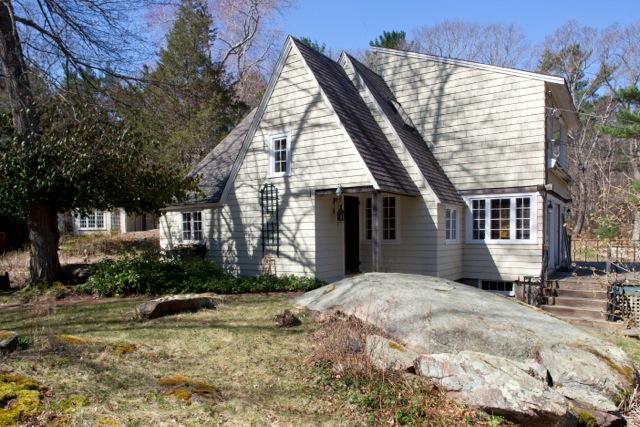It was 1979. Cable television still was nothing more than a small crop of rural community antennas. Many of the "experts" on a channel or two of that medium who today are remodeling kitchens, bathrooms, backyards and basements were still collecting Matchbox Cars. But This Old House was off and running — proving that apples may fall near the tree, but some roll far from it.
The series started as one of many good ideas from the mind of Russell Morash (e.g., The French Chef with Julia Child, The New Yankee Workshop, The Victory Garden, among others), programming innovator par excellenceof Boston public-TV station WGBH since its early days. It continues as one of public television's most popular series, an "appointment television" phenomenon long before the phrase was coined.
This Thursday at 8 p.m. ET (check local listings), the PBS series kicks off its 33rd season by taking on a 19th century Victorian home in Cambridge, Mass (above). The 1887 building has lots of architectural restrictions that control how it can look on the outside but whose owners have enough carte blanche inside to remodel the former two-family into an especially non-Victorian style: Scandinavian Modern. Fifteen episodes later, the "after" pictures will compare — as always — immeasurably better than those viewers of the initial episode will see.

January will bring the second project of the new season, a 1930s cottage in relatively unpopulated and bucolic Essex, Mass., that the owners are remodeling into a senior-friendly home for their aging parents. Here, where the building is newer and hasn't an historical pedigree, rules aren't as set in stone — though a large rock ledge that greatly pre-dates Queen Victoria has to be blasted away before work can proceed, as viewers will see during the 11-part renovation.
Guiding the two disparate projects will be the series' senior producer, Deborah Hood, a young woman who says she "grew up watching This Old House".
More than 10 years ago, while she was working for a company that makes documentaries, she heard about and applied for a job as a TOH production assistant — but heard nothing back. More than a year later, Morash decided her resume was right for a different job and she was hired. Her first job as a producer was a 2003 remodel in Bermuda. She was made senior producer in 2009, a year in which the program won an Emmy for its post-Katrina New Orleans project.
Hood (left center) has worked alongside the series' experts (Norm Abram (far left), Tom Silva, Rich Trethewey and Roger Cook) for more than a decade and with the host, Kevin O'Connor (left, on right), since he joined the series in 2003. Because both homes are so close to the show's Boston home base, the five will be seen more often than in years in which one of the project homes is in another state. General contractor Silva's company is in charge of both projects.
She says "the pressure on him is immense," but knows he'll turn both jobs into the kinds of successes that have marked his work over the years.
This Old House is a rare public-television hybrid. It was born at WGBH, but was sold to Time Inc. more than a decade ago. The program is still presented under the WGBH banner and remains subject to the strict PBS rules against commercialization. That doesn't bother the corporate parents, apparently:
"We enjoy an incredible independence," Hood said. Owners of the homes always have paid for their projects, and though the show works with suppliers to get them reduced prices, goods are never traded for editorial exposure, she said.
Keeping both projects within driving distance wasn't a cost-saving effort, she added, but "the luck of the draw. It wasn't the economy so much as it was getting two wonderful options with two separate story lines."
Of the different homes submitted for consideration by last spring's deadline (criteria/guidelines can be viewed online), the two in Massachusetts were judged best. The fact that each is reachable without standing in a single airport-security line is an rare added bonus.
Construction sites, stereotypically, are male strongholds and women are treated, at best, as intruders. But that's not the case with this program, she said."Ours is such a respectful group, I can honestly say I have never felt a hint of sexism or discrimination. I think Tom Silva (right, with Hood) sets the tone for that on his job site — he is the father of a daughter my age, but I also think that is just who he is."
Even so, there is one drawback: "That being said, sometimes it's no fun being one of the only females on site, especially during the phase when we have no bathrooms or running water."